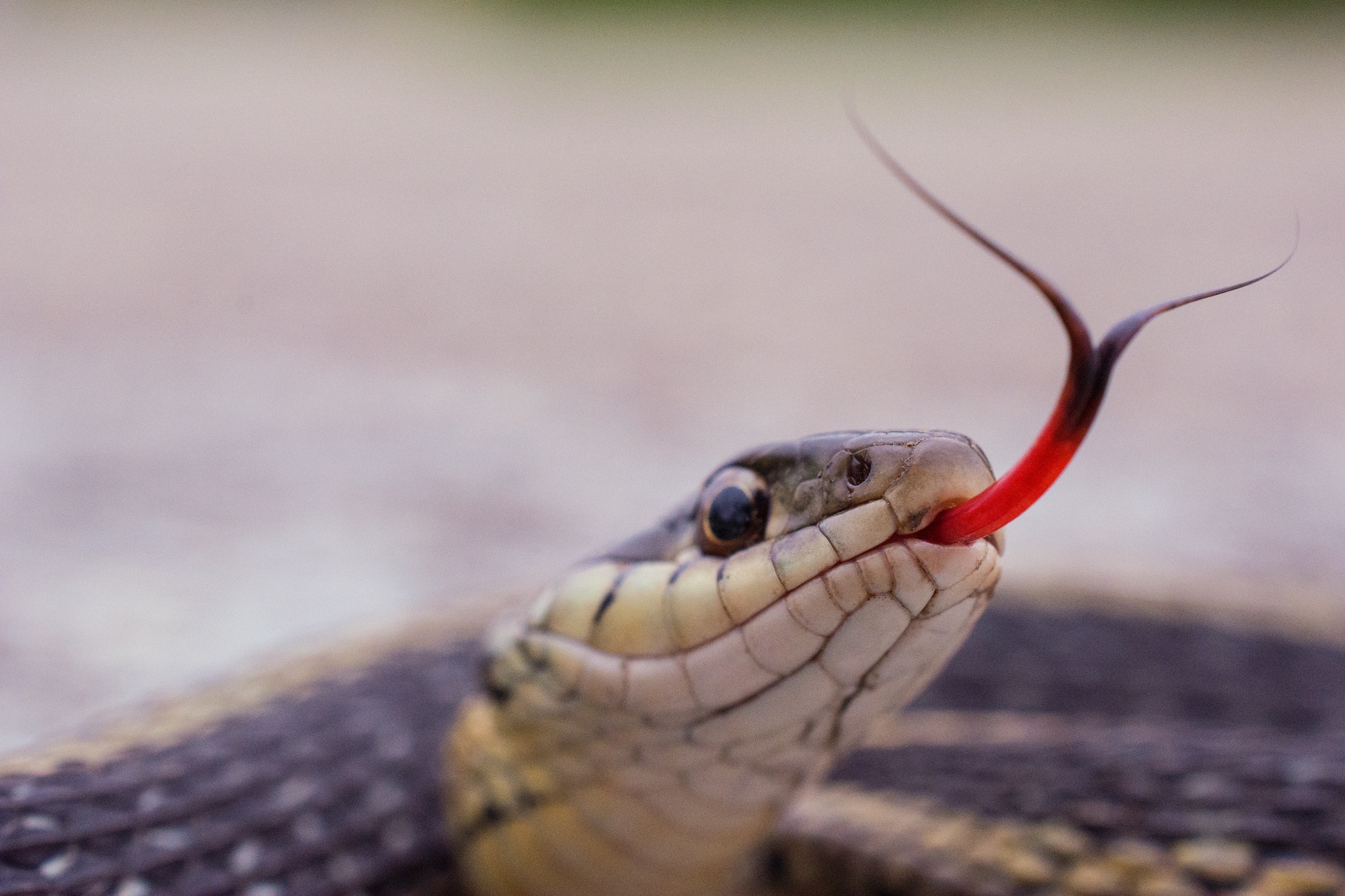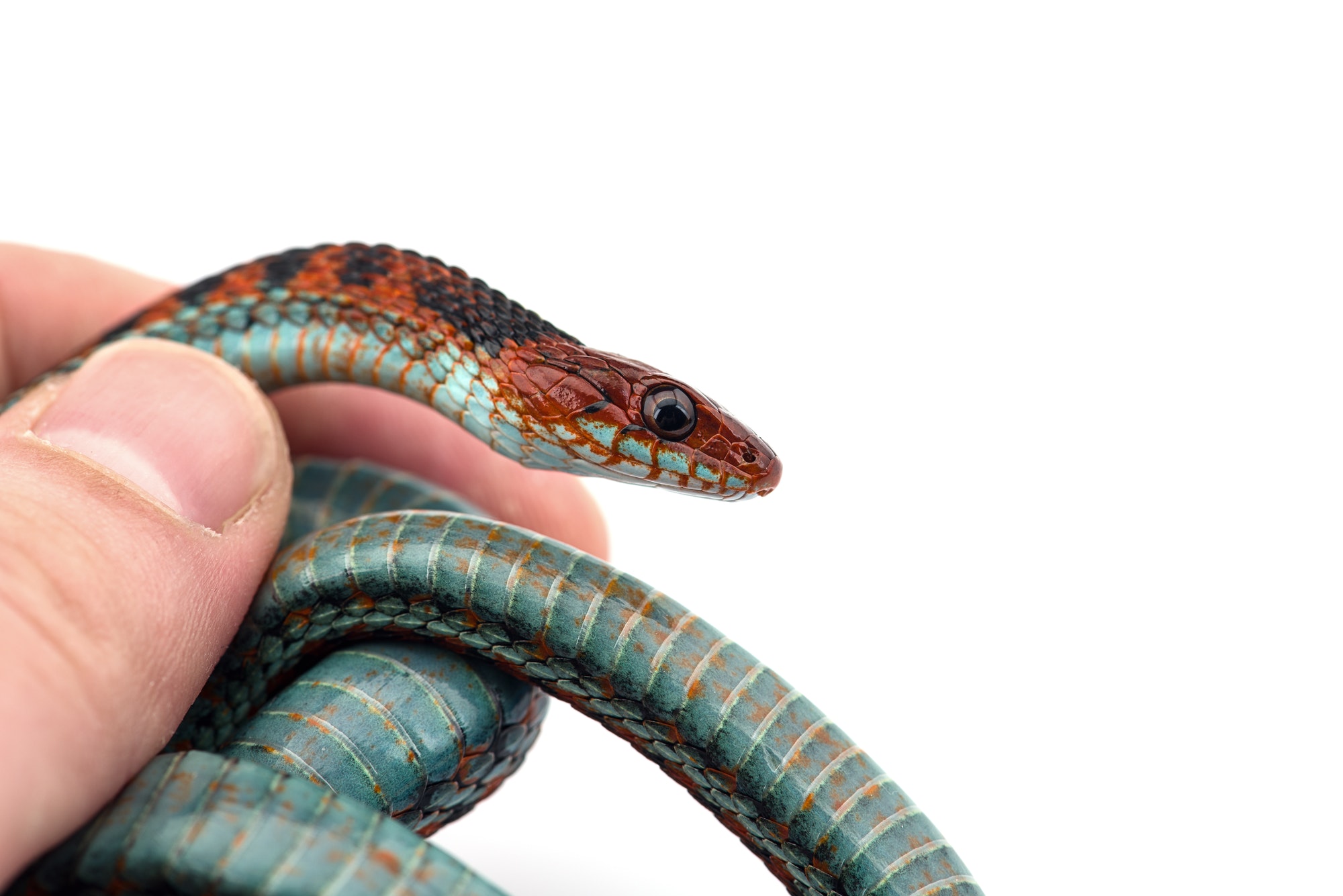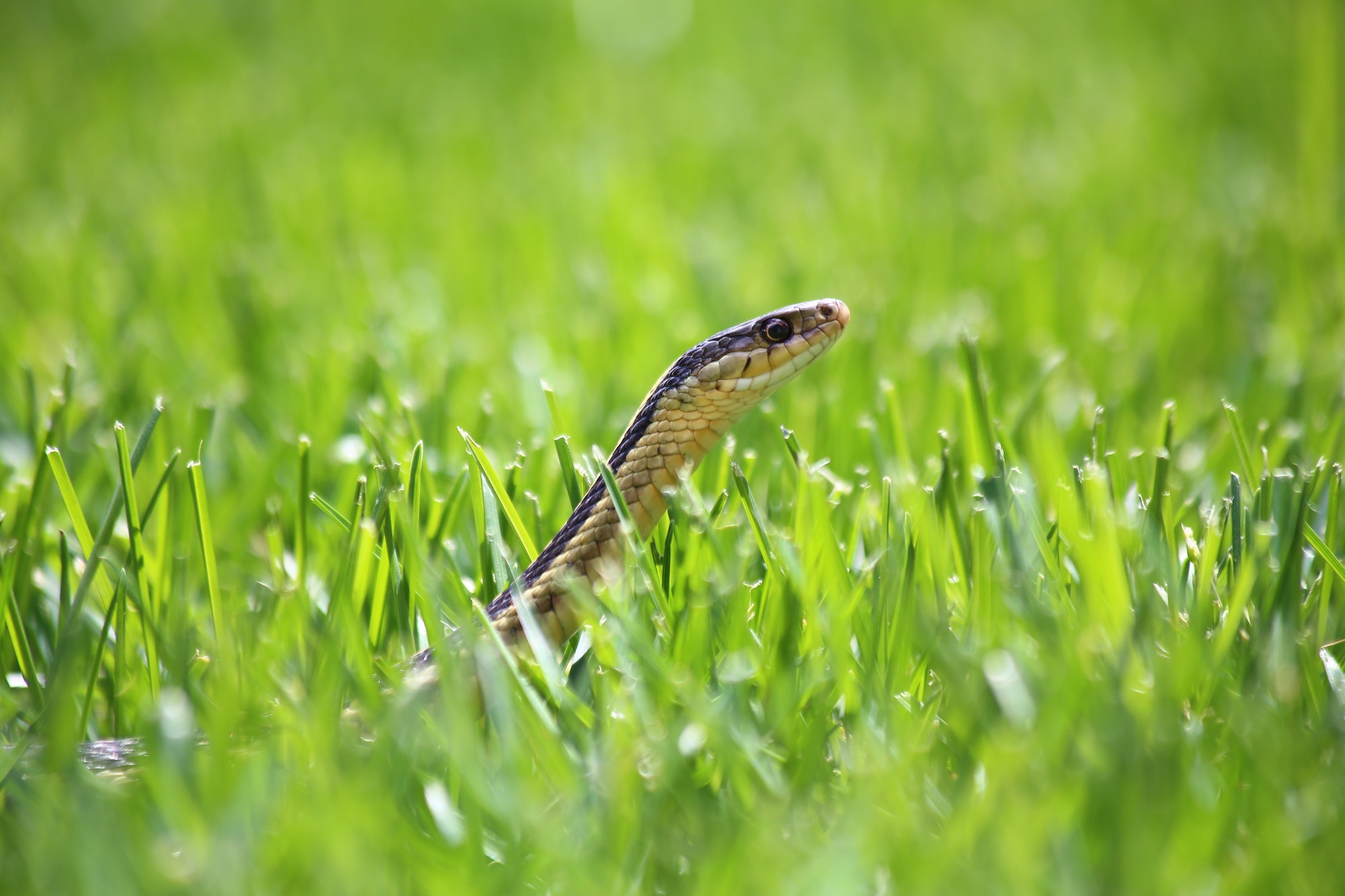Are Garter Snakes Dangerous?
Garter snakes can be found throughout North America belonging to several species and some with unique colors and patterns. The garter snake is common in many states in the United States. For example, in California one can sight the Western Terrestrial Garter snake in its uniform black, brown, red or gray colors (Gould). This specific garter snake can be found in North America and is not venomous and will it’s bite will not cause death or danger to humans.
Envenoming garter snakes exist in North America there are two species: the Wandering garter snake and Eastern garter snake (1990:120). Unfortunately for small animals and insects the effects are opposite when contracted with a bite from a garter snake. Meaning North American Garter snakes are not dangerous to humans but they are dangerous to prey such as their preferred feeding options of fish and amphibians (Perlowin 2005:4,5,).

In Africa garter snakes are known for being dangerous towards humans according to author Franklin D. Gould, the commonly named Garter snake found in Africa are very different, belonging to the Ellipsoid and are highly dangerous due to their extremely toxic venom (Gould). The North American Common Garter snake is not venomous to humans and in rare instances when a human is bit from a garter snake the saliva entering the bite wound has caused allergic reaction causing hyper-allergic reaction to garter snake saliva (Gould).
North American Garter snakes are common household pets in the United States and are recommended as a first pet snake for children and families interested in snakes. Garter snakes are typically small in size and adjust to humans when being properly handled and cared for. Most North American garter snakes are in the 50-100 cm size range (1990:124).

The Thamnophis sirtalis sirtalis also known as the Common Garter snake can be found essentially anywhere they have been seen in woodland passes, meadows, and near moving water (Gould). The common garter snake is harmless to humans unless it is provoked or in a situation it needs to defend itself. Most garters will respond defensively to a model of a mammalian eye, when pushed to extreme, striking repeatedly at it (Gould) meaning that the Garter snake will protect itself in any situation where the garter snake is in a situation needing to defend itself.
Garter snakes are not dangerous to humans, they are small snakes that can adapt in most environments although there are a few species that are venomous this snake is not dangerous to humans. Among the species listed, it should be emphasized that only a small percentage of bites result in envenomation; this may range from 10-20% to a fraction less than 1 % with garter snakes (1990:120). Meaning that the chances of a garter snake to strike toxic venom is less likely to happen most sightings with a garter snake are unnoticed and/or safe.
My personal opinion
Growing up in southern California my experience with garter snakes were reoccurring because I lived near mountains and I also grew up going on hikes and these two factors lead me to sightings of these little snakes. I remember being afraid of them because I thought they would attack me and bite me with toxic venom. Many family members and friends would always reassure me that garter snakes are “non-problematic snakes” who just mind their own business. My grandmother who loved to garden would tell them these snakes are her best friends because they eat bugs and small animals that eat her plants and vegetables. I enjoyed researching and learning about garter snakes and I do not find them dangerous but that does not mean I will pick one up and keep it as a pet. These snakes are not dangerous but will defend themselves if needed. Please respect them and call for professionals if you find them close to your home.
Author: Jessica Delazari
California State University Bakersfield
References
- Gould, Franklin. “An introduction to the Natural History of North American Garter Snakes with Basic Triage Practices.” Journal of Wildlife Rehabilitation. 21(3-4). http://www.thamnophis.com/archive/articles/artic22.htm
- Minton, S.A. 1990. “Venomous bites by nonvenomous snakes: an annotated bibliography of colubrid envenomation.” Journal of Wilderness Medicine. 119-127. https://www.wemjournal.org/article/S0953-9859(90)71321-6/pdf
- Perlowin, David. 2005. Garter Snakes and Water Snakes. Irvine, CA: Advanced Vivarium Systems, Inc.








